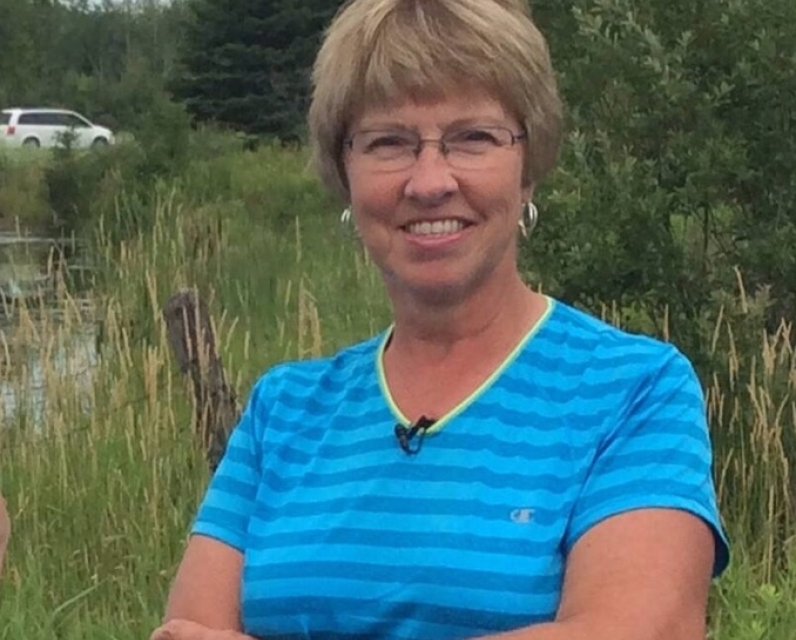Unpublished Opinions
Lucie is a mother of three, grandmother of six, well known active member of the Carlsbad Springs community. Concerned for the welfare of her granchildren, she's a member of the Carlsbad Springs Optimist Club (friend of youth), director with Carlsbad Springs Community Association and vice-president of the Capital Region Citizens Coalition for the Protection of the Environment (CRCCPE) which is currently fighting a proposed landfill by Taggart Miller in Ottawa's east end.
Dear Minister Murray...

Dear Minister Murray,
What follows is my personal opinion in regards to the Ministry Review of the Capital Region Resource Recovery Centre (CRRRC) Environmental Assessment which was released April 15, 2016. There are many serious issues with the proposed site. Let me raise only a few.
I have lived my entire life in the area where the CRRRC site is proposed, and so have my parents and grandparents. This very unique rural area had prosperous farms, up until the National Capital Commission (NCC) decided to expropriate everyone in the late 1960s for a project called the “Satellite City”. An initial engineering firm went ahead and did some studies and indicated that the soil was good to build such project. For some unknown reason, after the NCC had expropriated many family homes and farms, a second engineering firm – K.H.King Associates Ltd - was hired to review the preliminary report on conditions of the site. Low and behold, this engineering firm (and I have a copy of the report) indicated that indeed a Satellite City could be built but there were MAJOR issues with the soil – the Leda clay – and I quote from that report: “The site is underlain by an extensive (100 to over 200 feet) deposit of soft, lightly – over-consolidated and highly sensitive Leda clay. Although this clay deposit is found extensively throughout the Ottawa area, it is important to bear in mind that in the south-east part of Gloucester Township, it has been found to be softer and more highly compressible than elsewhere... The very poor supporting capacity of the subsoil has been amply demonstrated. Normal foundations are feasible only for single-family dwellings not exceeding two stories in height and heavier structures will require special, and hence expensive, foundation treatment. For the same reason, extensive re-grading of the site, which would be desirable for landscaping and to improve drainage, presents many problems.
The interesting fact to note here is that the first engineering firm hired to evaluate the soil for the Satellite City project was Golder Associates, which happens to be the current engineering firm hired by Taggart Miller Environmental Services for the CRRRC project, which is now studying the same site! Do I need to say more...
The final summary point in the K.H. King Associates Ltd. report is as follows: “To sum up, it has now been established that the subsoil at this site presents major problems to development on a scale which has not been experienced before. These problems are concerned not only with the design and execution of foundations and services but with every aspect of the planning and staging throughout the development period... It would appear that there are MAJOR constraints imposed by the soil conditions to the planning of any sort of viable development beyond a sterile dormitory suburb.
The other issue I would like to raise is, because of the presence of the Leda clay soil and the flat topography, the ground surface is frequently inundated with water. I know this for a fact because my mother’s parents owned the 100 acres farm which is now part of the proposed landfill. I remember my mother telling me that, although the land was good agricultural land, her father had to really work hard at draining. As mentioned earlier, the site is very flat with a high water table, which drains via the Simpson Drain system into the Bear Brook creek, in the South Nation River watershed. We are told by experts that the Environmental Assessment Review does not contain adequate modeling of downstream effects of possible breaches or failures in leachate and run-off containment from this flood-prone site. There is already too much phosphorus at the site and it represents a concern as it is in the watershed. The same K.H. King Associates Ltd. report indicates that “the natural outlet for such drainage is Bear Brook creek but this could not be expected to receive the increased run-off from development without extensive erosion protection downstream, and probably in the South Nation River as well. This will be necessary to minimize the future occurrence of major landslides which are prevalent in the area.
Another point that I wish to raise is the potential impact, a landfill of this magnitude, would have on local surface water and shallow wells. Not everyone in the community is hooked to the municipal trickle feed water system. For those who do not benefit from this system, and there are many of us, contamination of our surface water represents a huge risk. What does one do with its house when the surface well is polluted? At the first public consultation open house event organized by Taggart-Miller, I asked Mr. Ian Taggart directly what would happen to my family and my house if my well were to be contaminated. His response was that they were putting in place a special “fund” to actually help out those who would encounter this problem. When I questioned him on how I would access these funds, I receive a very evasive reply. I indicated to him that I would most likely have to prove that it was the landfill which had contaminated my well and by the time I hired experts to do so, I would have spent my life’s earnings and would lose my house anyway. He did not say otherwise.
I am a mother of three children and grandmother of six grandchildren and all I want is for them to have a nice place to live, an environmentally friendly one, and this will not happen if this proposed landfill gets approved. There are already serious concerns raised regarding the accurate tracking of greenhouse gas emissions to be used and the landfill isn’t even built! I believe there will be effects felt by all those near the site on the surrounding air quality. There is an elementary school located close by in Vars where over 250 children play outside everyday. The Conseil catholique des Écoles du Centre-Est (CECCE) indicated to the proponent that “Le CECCE est inquiet des effets négatifs par rapport aux éléments suivants : poussières pouvant émanées du traitement et séparation des matériaux en général (ex. : broyage du ciment et béton); impacts environnementaux et possibilité de contamination du sol en raison de l’enfouissement de différents métaux (métaux lourds, plomb, etc.); et, les enfants sont généralement plus susceptibles à l’influence de contaminants. I did not see those concerns in the Ministry review? The proponent can control many things but can they really control with certainty the quality of the air? In this current era of protection against climate change, one would think we would try to minimize the greenhouse gas effects and everyone knows that landfills produce a lot of it!
In summary, Minister Murray, on the Ontario website, you are quoted as saying “Fighting climate change and working to keep our air, land, and water clean will ensure Ontario’s prosperity and quality of life for today and for future generations.” Now if you are really fighting climate change and working to keep Ontario clean, then you should, at a minimum, reject this proposed project or at the very least refer it to the Environmental Review Tribunal where experts from both sides could have their say. I have raised only a few key issues – Leda clay, surface and ground water and air quality – which should be referred to the Tribunal. I am certain there are many more.
Environmentally yours,
Lucie Régimbald
Edwards, ON K0A 1V0
(3 kms away from proposed landfill)



Comments
Be the first to comment